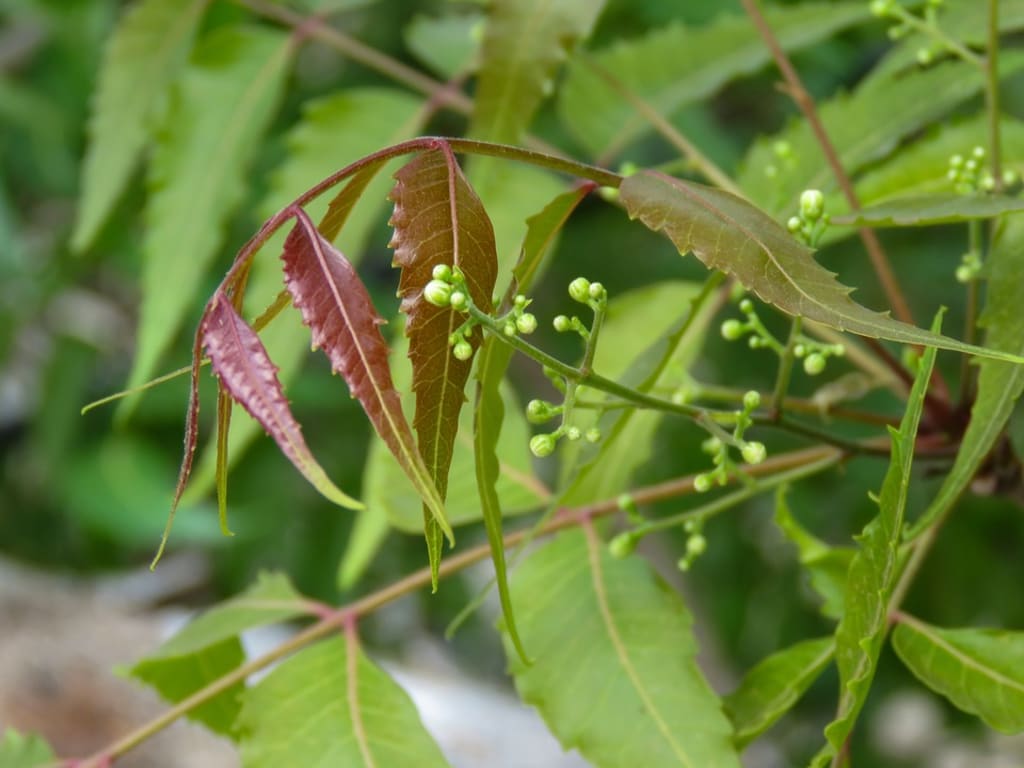India’s Village Pharmacy
Neem tree

Once upon a time, there was a neem tree that stood tall in the middle of a small village. The neem tree had been there for as long as anyone could remember, and the villagers considered it to be a sacred tree that provided many benefits.
The neem tree was known for its bitter leaves, which were used in traditional medicine to treat various ailments such as diabetes, malaria, and arthritis. The tree also had a reputation for repelling insects and pests, which made it a popular choice for farmers looking to protect their crops.
The villagers would often gather under the shade of the neem tree to rest and socialize, and it became a central gathering place for the community. Children would play around the tree, and elders would sit and share stories of their ancestors.
One day, a group of outsiders came to the village and began cutting down trees to make way for a new development project. The neem tree was in their path, and they planned to cut it down as well.
The villagers were outraged and formed a human chain around the neem tree to protect it from the outsiders. They argued that the neem tree was a symbol of their cultural heritage and had provided them with countless benefits over the years.
The outsiders were taken aback by the villagers' passion and determination, and they eventually relented and agreed to spare the neem tree. The villagers cheered and celebrated their victory, and the neem tree remained standing tall in the center of the village.
Over the years, the neem tree continued to provide for the villagers, and its leaves and bark were used to make various products such as soap, toothpaste, and insecticides. The tree also became a symbol of resilience and community spirit, and the villagers continued to gather under its shade for generations to come.
And so, the neem tree lived on, a testament to the power of nature and the strength of community.
Neem, also known as Azadirachta indica, is a tree that is native to the Indian subcontinent.
The neem tree can grow up to 20 meters tall and has a wide spreading canopy.
Neem has been used in traditional medicine for over 2,000 years to treat a variety of ailments, including skin conditions, fever, and malaria.
The neem tree is known for its bitter leaves, which are used in cooking, and for their medicinal properties.
Neem is also known for its insecticidal properties, and the tree's leaves, bark, and seeds are used to make natural insecticides.
Neem oil is a popular natural remedy for treating acne, and it is also used in skincare products to soothe dry skin and promote healthy hair.
The neem tree is considered to be a sacred tree in India, and it is often planted near temples and other holy places.
Neem is known to have antifungal, antibacterial, and antiviral properties, and it is used to treat a variety of infections.
The neem tree has a wide range of environmental benefits, including soil conservation, erosion control, and the ability to reduce greenhouse gas emissions.
Neem is also used in agriculture as a natural pesticide and fertilizer, and it is known to improve soil quality and promote plant growth.
Neem is often referred to as the "village pharmacy" in India due to its many medicinal properties and uses.
Neem is a hardy tree that can withstand drought and harsh environmental conditions, making it ideal for growing in arid regions.
Neem is an important part of Ayurvedic medicine, a traditional system of medicine that originated in India over 5,000 years ago.
The neem tree is often used as a natural toothbrush in India, with the branches of the tree chewed to clean teeth and freshen breath.
Neem leaves are often boiled and used to make a tea that is known for its immune-boosting properties.
Neem oil is used as a natural remedy for treating dandruff and promoting healthy hair growth.
Neem is also known to have anti-inflammatory properties, making it useful for treating conditions such as arthritis and other inflammatory disorders.
The neem tree has been used in traditional Indian agriculture for centuries to improve soil fertility and reduce soil erosion.
Neem is often used in organic farming as a natural pesticide and herbicide, and it is considered to be a safe and effective alternative to chemical pesticides.
Neem is also used in the production of soap, cosmetics, and other personal care products due to its antibacterial and antifungal properties.
About the Creator
Openee Article
Openee Article . Specializing in writing artcile about Entertainers,Scientists,etc... we have a talent for making complex subjects accessible and engaging to a wide audience.






Comments
There are no comments for this story
Be the first to respond and start the conversation.